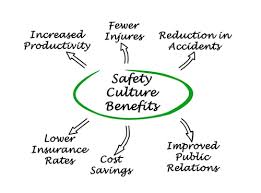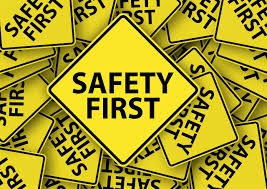Safety Culture is about people and how they work together.
An organizational culture that supports safety is essential for the prevention of injuries and illness.
There is no standard definition of safety culture but there are two main things that are common to all definitions.

1. It is about people’s values, attitudes, beliefs and behaviours. In an organisation with a good safety culture, these are geared towards safety which is considered a priority.
2. It is about the spread of these values, attitudes, beliefs and behaviours. Organisations with a good safety culture have these spread throughout—from top management to the shop floor and in everything everyone does in the organisation.
The concept of safety culture emerged in the early 1980s. However, the Chernobyl nuclear accident helped focus mainstream safety management on safety culture.
The International Atomic Energy Agency summary report of Chernobyl stated that ‘formal procedures must be properly reviewed and approved and must be supplemented by the creation and maintenance of a nuclear safety culture’.
Since then, the concept of safety culture has been embraced by many industries, not just nuclear power, including: healthcare, aviation, oil and gas, energy and mining.

Making changes to safety culture usually starts with smaller changes at the local level. For example, having a good reporting system for incidents and events and ensuring these are acted upon in a just and fair manner goes a long way to improve the overall culture of the organisation.
It is important to recognize that organizational culture develops over the life of an organization.
Dr. Steve Simon, an organizational psychologist who has published in the health and safety literature on safety culture, has said, “To change organizational behaviour, group norms, not individual attitudes, should be addressed.”
The core values, beliefs and behaviours resulting from a collective commitment by leaders and individuals throughout an organisation that appropriately prioritise safety against other organisational goals to allow business objectives to be undertaken without undue risk.
Organisations with a good safety culture have those spread throughout from top management to the rank and file and in everything everyone does in the organisation.

It is not enough to simply state a new policy or rule. Effective, two-way communication that emphasizes shared values and goals, rather than the traditional top-down, hierarchical policies, is necessary.
There are many tools and approaches available today that can drive safety performance improvement, but they all require a workplace culture that recognizes and embraces safety as a key goal of the organization and its employees in order to be successful.




